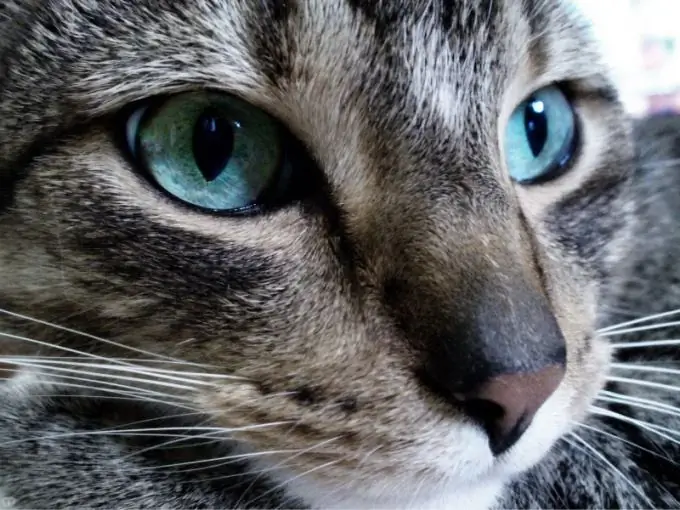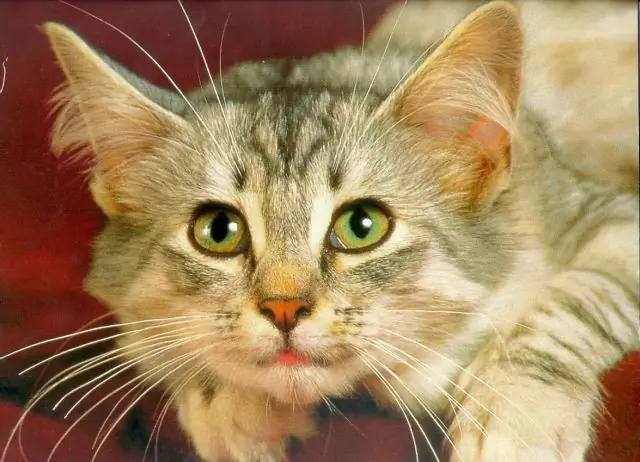- Author Delia Mathews [email protected].
- Public 2024-01-08 23:30.
- Last modified 2025-01-22 15:45.
Ringworm is a fairly serious disease caused by fungi. In cats, it most often affects the skin and goes away on its own, even without the use of medication. However, it is still necessary to treat the animal, especially because of the danger of human infection. How to identify lichen in a cat?

Instructions
Step 1
Observe the behavior of your pet, especially if it is outside. Itching may be the first sign of an onset disease. With shingles, cats usually have itchy ears. If your animal is often sick and has low immunity, it is more likely to become infected with the fungus.

Step 2
Examine the hair of the cat carefully, paying particular attention to the head, ears and tail. The classic symptom of ringworm is small, round patches that are devoid of hair. On the skin in these places, redness, scales, blisters and abscesses can be observed. Over time, foci of lichen can grow. Occasionally, the affected areas cross the animal's face and can be confused with other skin conditions. In some cases, lichen can cover the entire body, causing the skin to become greasy, crusty, and flaky. Deformed and abnormally growing claws are another sign of fungal infection.

Step 3
Make an appointment with your veterinarian. Examination with Wood's fluorescent lamp can reveal some varieties of lichen fungi - they fluoresce under its rays. However, this method is not reliable enough - some species of Microsporum canis do not respond to this lamp, and Trichophyton mentagrophytes never glow at all. And if the examination reveals the presence of fungal spores, keep in mind that the animal does not necessarily hurt.

Step 4
Another way to identify lichen in cats is to examine the fur at the edges of the affected area. It is possible to identify the disease by this method in about half of the cases.

Step 5
The most reliable way to diagnose ringworm is by sowing a fungal culture. To do this, use scraping from the diseased area of the skin. The sample is placed in a special solution designed to identify lichen spores.






